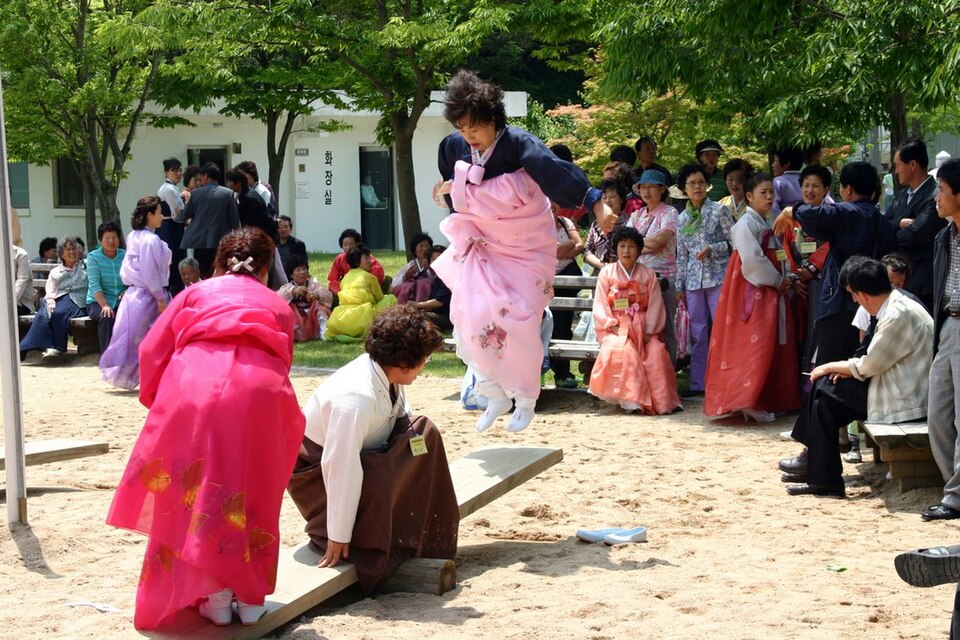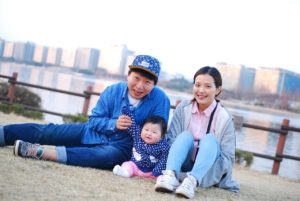Celebrating Korea’s Dano Festival (단오): Origins, Traditions, and Modern Significance
The 단오 Dano Festival, also called 수릿날Surit-nal, is one of Korea’s oldest traditional holidays. Koreans celebrate it on the fifth day of the fifth lunar month, which means that it typically falls in late May or June on the solar calendar. 단오 Dano has roots in ancient agrarian society. It was originally a day of ancestral worship and seasonal ritual that marks the transition to summer and the hope for a good harvest. Though not as widely celebrated today as holidays like 설날 Seollal (Lunar New Year) or 추석 Chuseok (Harvest Festival), Dano remains a vibrant part of Korea’s cultural heritage, particularly in regions such as Gangneung.
Origins and History of 단오, Korea’s Dano Festival
Historically, Dano has associations with shamanistic rituals to ensure fertility, health, and protection from evil spirits during the hot, disease-prone summer months. It was also a time when farmers prayed for an abundant harvest. The holiday’s alternative name 수릿날 Surit-nal derives from 수리 suri, an old term for wheel. For this reason, rice cakes made during the festival often include wheel patterns. The word is also similar to 수리 suri (eagle), which is a common symbol in shamanism.
Dano is a time of 양기 yang-gi (hot, active, bright yang energy), and its date—5/5 on the lunar calendar—is considered especially auspicious. This is similar to Japan’s Tango no Sekku and China’s 端午节 Duānwǔ jié (Dragonboat Festival), also celebrated on the same date. These regional similarities demonstrate shared East Asian seasonal cosmologies.
Customs and Celebrations of 단오, Korea’s Dano Festival
Traditional Dano customs are rich and varied, blending community celebration with rituals for spiritual protection and physical well-being. One of the most famous events of Dano is the 강릉단오제 gangneungdan-oje (Gangneung Danoje Festival). This is a UNESCO-recognized cultural heritage event held annually in Gangneung on Korea’s east coast. This multi-day celebration includes 굿 gut, (shamanistic rituals), 탈춤 talchum (traditional mask dances), 씨름 ssireum (traditional wrestling), and music performances.
On Dano, women washed their hair in water boiled with 창포 changpo (sweet flag leaves), believed to strengthen hair and ward off evil. They also wore iris in their hair as well as red and blue silk hair ribbons. Women also competed in elaborate swinging and seesawing activities. These practices were symbolic of beauty, health, and protection.
Men and boys participated in 씨름 ssireum matches, a form of traditional Korean wrestling held on sand pits. The winner received the title 장사 jangsa (strong man). Other activities included 석전 seokjeon (stone battle games), and martial arts.
Modern Dano celebrations often include these traditional folk elements.
Special Foods of 단오, Korea’s Dano Festival
Dano foods are colorful and symbolic. The most iconic is 쑥떡 ssuktteok, a green rice cake made with mugwort (쑥ssuk) and glutinous rice. The earthy herb was believed to have medicinal properties, and the cake is often pressed with decorative patterns. Another popular dish is 수리취떡surichitteok, made from glutinous rice, herbs, and red beans, with the circular suri (wheel) design. Seasonal fruits and 막걸리 makgeolli (rice wine) are also popular.
Dano in Modern Korea
Though Dano is no longer a national holiday, modern Koreans preserve it through regional festivals, most notably in Gangneung, and increasingly through cultural programming in schools and museums. For many modern Koreans, it is a way to connect with traditional folk culture, spirituality, and seasonal rhythms that many people overlook in busy urban life.
In recent years, there has been a revival of interest in Korea’s 풍물 pungmul (folk music), sometimes known as 농악 nongak (farmers’ music). People are also interested in rediscovering 굿 gut, (shamanistic rituals) and other intangible heritage tied to Dano. Younger generations attend Dano festivals to experience 한복 hanbok (traditional clothing), try their hand at 씨름 ssireum, or sample seasonal treats.
Dano remains a rich celebration of Korean identity—tying nature, community, and spiritual wellness together. Whether through herbal rituals, spirited dances, or the simple act of sharing ssuktteok, Dano reminds Koreans of the beauty and depth of their seasonal traditions.
Get on the road to speaking Korean with the Language Garage!
We hope you’ve enjoyed learning about Korea’s Dano Festival. If you’d like to learn more:
- Follow us on Facebook, LinkedIn, BlueSky, Twitter, Threads, Mastodon, Instagram, or Pinterest. We publish lots of Korean vocabulary, grammar, and culture notes, so it’s a great way to pick up some new vocabulary and practice.
- Check out our other posts on Korean language, culture, and more.
- Enroll in affordable, flexible, and personalized private online Korean lessons or sign up for a small group online Korean class.
- Create a free Language Garage account to access tons of Korean vocabulary, grammar, and culture.
Image Source Wikimedia Commons






